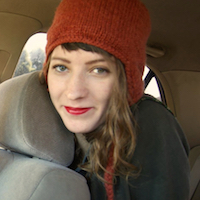More about Elena Brockmann
Works by Elena Brockmann

Contributor
Talented, ambitious, and from a wealthy family of artists. Elena Brockmann was a triple threat.
Here at Sartle, we love a good female artist, outdoing the dudes and sticking it to the man. In a time where women were often excluded from life-drawing classes and artistic opportunities in general, Spanish artist Elena Brockmann rose to prominence for her masterful history painting.
Brockmann came from an illustrious and wealthy family, including a distant relation to poet John Keats. Her family connections secured her a rare spot at a prestigious art school, where she scandalized the masses by enrolling in life drawing classes that required her to study the human anatomy (wink wink). Brockmann studied under her uncle, artist Juan Llanos y Keats, as well as Jose Benlliure and Joaquin Sorolla.
In her artistic heyday, Elena exhibited in three national exhibitions in Madrid and was recognized by her contemporaries as an incredibly talented artist. A critic named Fernanflor went so far as to say that she “paints like a man.” We’re not sure if this is a compliment or an insult, but we certainly agree that Brockmann had undeniable flair.
At the end of the 19th century, Elena Brockmann disappeared from prominence. Her specialization in history painting had gone out of style and so, on her own terms, Elena gracefully retired.
Featured Content
Here is what Wikipedia says about Elena Brockmann
Francisca María Brockmann y Llanos (1867–1946) was a Spanish historical painter.

Brockmann was born in Madrid as the granddaughter of Fanny Keats (the sister of the poet), whose portrait she painted. Her uncle Juan Llanos y Keats gave her painting lessons and she also studied with the history painter José Benlliure y Gil, where she was influenced by Joaquin Sorolla. She won awards in 1887 and 1892 at the Exposiciones Nacionales de Bellas Artes.
Her painting Outside a Roman Hostelry was included in the 1905 book Women Painters of the World.
Check out the full Wikipedia article about Elena Brockmann











